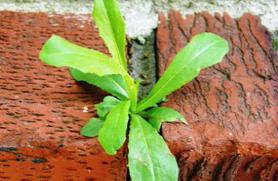Backyard Birds You Should Attract To Your Garden
Birds will eat insect pests year-round in your garden, if you provide a few of the basic necessities to attract and keep them nearby. Not only that, they've also been shown to alleviate stress and boost your mental health. Here’s how to attract 5 of the best birds for controlling garden pests.
1. Wrens
Brown- or gray-plumed, lively and vocal, 10 species of wrens call North America their home, living everywhere from brushy woodlands, shrubbery, and marshes to rocky canyons and even deserts.
The Carolina wren is almost exclusively an insect eater in the summer. The widespread house and Bewick's wrens also have insect-rich diets. Most wrens search trees, shrubs, and vines for caterpillars, ants, millipedes, grasshoppers, flies, snails, and beetles.
Wrens generally raise more than one brood during the season, with six to eight eggs per brood. It takes a lot of bugs to fill all those beaks, so it's fairly easy to get these prolific birds to nest in your yard. They'll take up residence in nest boxes; in empty gourds, cans, and jars; and even in clothespin bags left on the wash line!
1. Wrens
Brown- or gray-plumed, lively and vocal, 10 species of wrens call North America their home, living everywhere from brushy woodlands, shrubbery, and marshes to rocky canyons and even deserts.
The Carolina wren is almost exclusively an insect eater in the summer. The widespread house and Bewick's wrens also have insect-rich diets. Most wrens search trees, shrubs, and vines for caterpillars, ants, millipedes, grasshoppers, flies, snails, and beetles.
Wrens generally raise more than one brood during the season, with six to eight eggs per brood. It takes a lot of bugs to fill all those beaks, so it's fairly easy to get these prolific birds to nest in your yard. They'll take up residence in nest boxes; in empty gourds, cans, and jars; and even in clothespin bags left on the wash line!
CLICK TO READ MORE.




Comments
Post a Comment